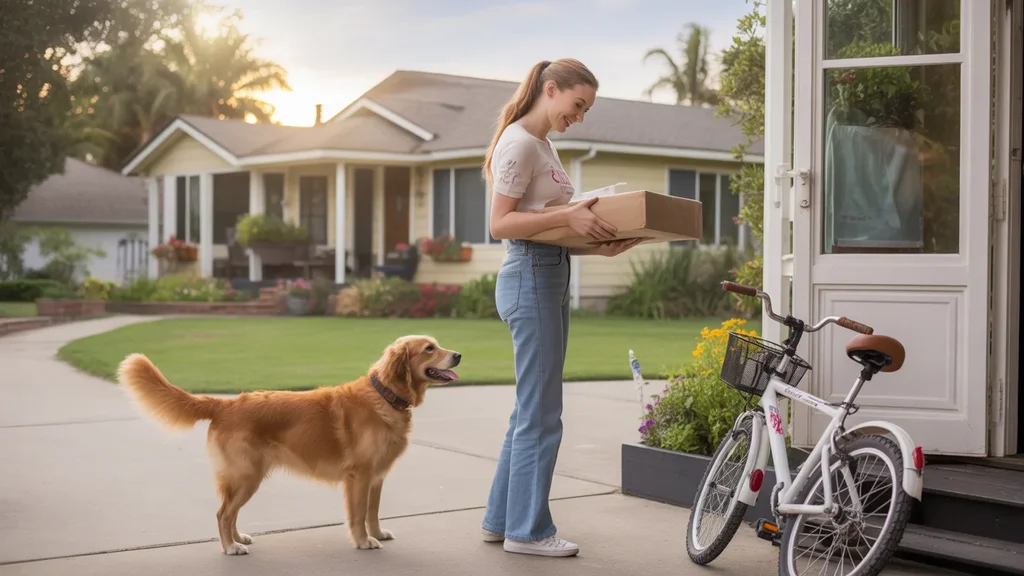The Housing Market in San Marcos Today

San Marcos, TX is experiencing a dynamic housing market in 2025. Inventory has tightened in recent years as demand for homes in this growing city remains strong. New housing developments are rising downtown and in surrounding neighborhoods to keep up with the influx of residents attracted by San Marcos’ combination of small-town charm and big-city amenities.
The local economy is thriving, driven by major employers like Texas State University and Amazon, as well as a vibrant small business scene. This economic vitality is one factor putting upward pressure on housing costs. At the same time, San Marcos remains more affordable than nearby cities like Austin, drawing cost-conscious buyers and renters.
Renting in San Marcos: What’s Typical?
For those looking to rent in San Marcos, a typical 1-bedroom apartment goes for around $1,100 per month as of 2025. Upgrading to a 2-bedroom unit will cost in the neighborhood of $1,450 monthly. These figures represent a modest 3-5% increase over the past few years, slower growth than during the early 2020s.
Renters can find the most options and best values in complexes near the Texas State campus and along major thoroughfares like I-35 and Highway 123. Newer luxury units command higher prices, often including amenities like resort-style pools, fitness centers, and smart home features. Many San Marcos apartments bundle utilities like trash and internet into monthly rent.
Students, young professionals, and downsizing retirees make up a sizable portion of San Marcos’ renter population. The rental market tends to move quickly, with well-priced units in popular areas often leasing within days of listing. Experts advise starting your search 30-60 days before your desired move-in date.
Owning a Home in San Marcos
As of mid-2025, the median home price in San Marcos stands at $350,000. For a typical buyer putting 10% down on a 30-year mortgage at 4.5% APR, this equates to a monthly payment around $1,800 before taxes and insurance. Factor in property taxes at the effective rate of 1.9% and insurance costs around $1,200 per year, and a San Marcos homeowner can expect a total monthly housing outlay in the ballpark of $2,450.
On top of the mortgage, San Marcos homeowners contend with additional costs like maintenance, repairs, and in some cases, Homeowners Association (HOA) dues. Older homes may have higher upkeep expenses, while newer builds often come with HOA fees of $100-300 per month. Utilities also tend to run higher in single-family homes compared to apartments.
Renters vs. Homeowners: Who Lives Where?
San Marcos’ homeownership rate sits at 52% as of the latest Census data, slightly below the national average. The city’s large student population skews this figure, as do rising home prices that can present a barrier to first-time buyers. Older residents and those with higher incomes are more likely to own their homes.
Families often prefer the space and autonomy of owning a single-family home with a yard, with neighborhoods like Blanco Vista and Castle Forest being popular choices. Young professionals gravitate toward renting modern apartments or purchasing condos downtown, prioritizing walkability and urban amenities. Retirees are a mix of longtime homeowners and recent transplants opting for low-maintenance rental living.
Table: Typical Monthly Housing Costs in San Marcos
Here’s what housing costs might look like each month in San Marcos:
| Cost | 1BR Apartment | 2BR Apartment | Median Home |
|---|---|---|---|
| Rent/Mortgage | $1,100 | $1,450 | $1,800 |
| Property Tax | $0 | $0 | $550 |
| Insurance | $15 | $18 | $100 |
| Utilities | $120 | $150 | $280 |
| HOA | $0 | $0 | $175 |
| Total | $1,235 | $1,618 | $2,905 |
Estimates reflect mid-range properties and average usage.
What’s Driving Costs Up or Down?
Several factors influence the trajectory of housing costs in San Marcos. On the demand side, the city’s growing population and healthy job market are putting upward pressure on prices. Supply is racing to keep pace, with new apartment complexes and single-family subdivisions springing up around town. However, construction faces headwinds from rising material and labor costs.
Zoning and land use policies also play a role. San Marcos has taken steps to encourage denser, more affordable housing options like accessory dwelling units (ADUs). However, some neighborhoods remain limited to single-family homes, constraining the overall housing supply. Striking the right balance between growth and preservation is an ongoing challenge.
FAQs About Housing in San Marcos
- Is San Marcos affordable to live in? While housing costs have risen in recent years, San Marcos remains relatively affordable compared to other cities in the Austin metro. Renters and buyers can find options at a range of price points.
- Why are housing prices changing? A combination of population growth, economic expansion, and limited housing supply is driving costs upward. At the same time, builders are working to bring more units online and keep prices in check.
- How does San Marcos compare to nearby cities? Housing costs in San Marcos are lower than in Austin proper but higher than in more rural parts of Hays County. The city offers a middle ground between big-city expenses and small-town affordability.
Making Smart Housing Decisions in San Marcos
For anyone navigating the San Marcos housing market, knowledge is power. Understanding the forces that shape local housing costs is key to making informed decisions, whether you’re looking to rent, buy, or invest. Monthly budget examples can help you gauge what’s affordable for your situation and plan accordingly.
Ultimately, the choice between renting and owning depends on your unique financial picture, life stage, and long-term goals. Consulting a local real estate agent or financial advisor can provide personalized guidance. For a high-level view of expenses across all major categories, check out our San Marcos cost of living guide.
